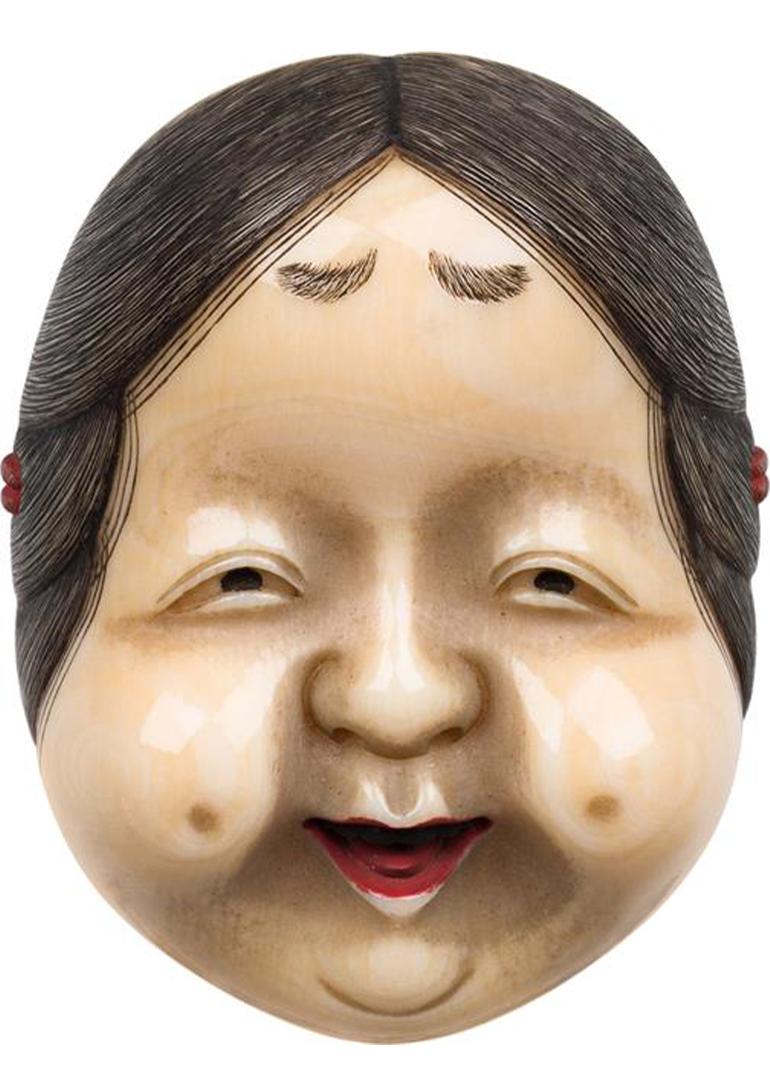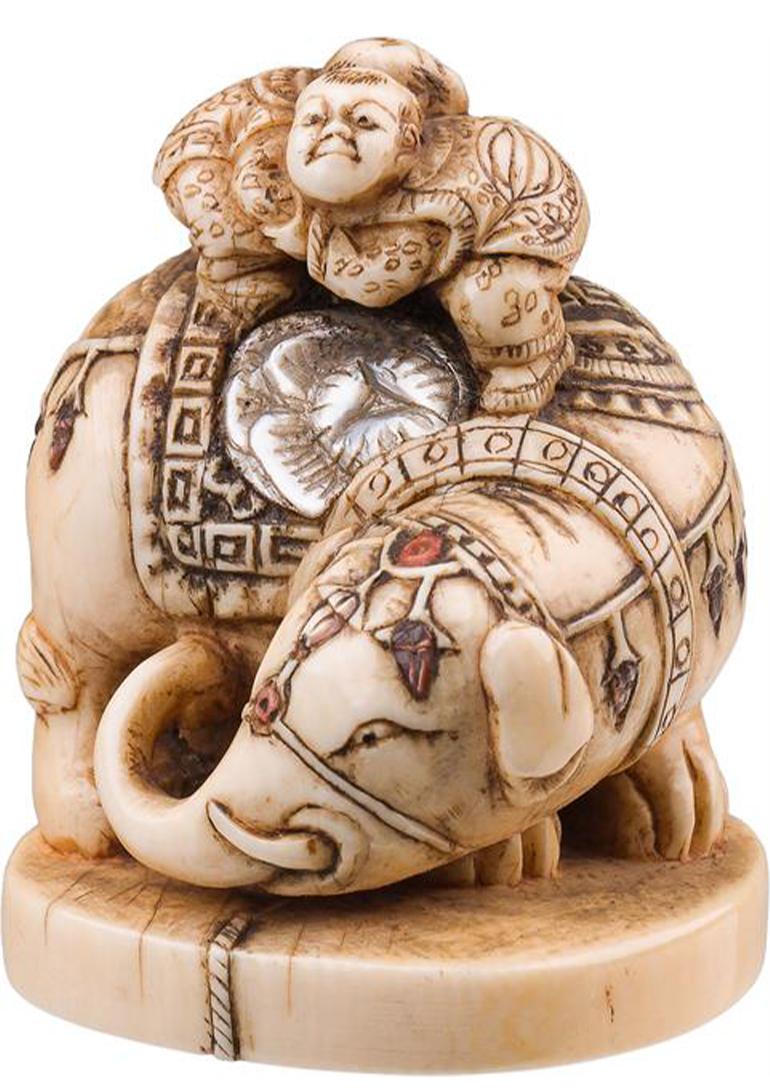In 17th-century Japan, out of necessity, a technically fascinating art object was created that made collectors' hearts beat faster. Clothing at that time lacked pockets, so sagemono was used to transport the small everyday objects, including stacking cans, leather bags or purses. These now had to be fastened to the obi, the belt. Namely with a gag.

If one breaks down the word netsuke into "ne", which means "root", and "tsuke", which stands for "hanging", one can assume that in the beginning it was mainly found objects that served as gags. Findings like roots or bones, into which 2 holes were then drilled, through which the string was pulled.
From the 17th century to the 19th century, these finds became real works of art, which are visually pleasing, but also cause a special fascination because of their haptic qualities. One of the most famous collections belonged to the publisher Albert Brockhaus, who dedicated an entire publication to the netsuke: "Netsuke: Versuch einer Geschichte der japanischen Schnitzkunst".

Netsuke: The diversity captivates
These collector's items are so popular because of their variety and high-quality materials.
Katabori: These netsuke are fully round and plastically formed, even on the sides, which were not visible when wearing them. They reflect the views of nature and society from the 17th century to the 19th century.
Manju: The term is borrowed from the rice cake of the same name and describes the oldest form of netsuke. These are round and flat, resembling a button, the upper side of which is decorated with either reliefs or motifs.

Kagemibuta: Pragmatically, a solution was also sought for tobacco consumption to allow the utensils to be carried on clothing without the need for pockets. Since the tobacco was imported from Portugal in the 17th century, it enjoyed great popularity in Japan and therefore corresponding netsuke were developed, which partly resembled Manju in their form, but were additionally equipped with coin-like metal plates in the middle.
Ryusa: These netsuke are extremely rare and valuable. In their form they are again similar to the Manju, but they captivate with their artistic and laborious carving work, which allows the material to be broken through.
Masks: Here the netsuke are meant, which are shaped like masks and are based on their great models.
Okimono: These netsuke probably came into being when the need for the original netsuke disappeared. For this purpose, moulded, artistically designed and also larger netsukes were created, which were primarily used as ornamental objects.

Carving: Materials and their requirements
Wood is a grateful material and was probably the most widely used. There are many types of wood in Japan, but boxwood and cherrywood were preferred. Netsuke of cypress wood are mostly painted, and the hard ebony was used when particularly fine carvings were to be made.
Netsuke made of ivory can be seen very often. The ivory was imported from Siam and the teeth were cut into pieces. Partly the netsuke was made from the tips of the teeth - the design had to adapt to the shape of the original material.
Other types of ivory from the pot whale or walrus were also popular. Further materials used to produce the small figures were boar's teeth, bone, coral, tortoiseshell, ceramic and horn.
